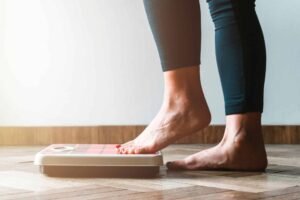Understanding Body Types: Finding Your Fit
In the realm of fitness, understanding body types is a fundamental aspect that can greatly influence workout efficacy and nutritional strategies. The classification of body types can be largely categorized into three primary groups: ectomorph, mesomorph, and endomorph. Each type exhibits distinct physiological characteristics that can affect an individual’s approach to fitness and health.
Ectomorphs are typically characterized by a slender build, possessing narrow shoulders and hips, along with a fast metabolism. Individuals with this body type may find it challenging to gain weight and muscle mass, often requiring higher calorie intake and specific strength training regimens to enhance their physique. Their natural inclination towards endurance sports can also see them excelling in activities that require stamina over sheer muscle power.
Conversely, mesomorphs present a more muscular and athletic physique, marked by broader shoulders and a naturally higher percentage of lean muscle mass. This body type often enjoys the advantage of gaining muscle quickly and efficiently losing fat. Mesomorphs can usually handle a balanced approach to fitness, integrating both strength training and cardiovascular exercises seamlessly into their routines.
Finally, endomorphs possess a rounder body shape, with a tendency to store fat more readily. This body type can struggle with weight loss but may find it easier to gain muscle. For endomorphs, strength training with an emphasis on higher intensity workouts can be particularly beneficial, paired with a diet that encourages fat loss while supplying adequate nutrients for muscle growth.
Recognizing one’s body type is crucial for tailoring effective fitness routines. By understanding these categories and their respective strengths and weaknesses, individuals can select or modify their workouts to align with their physical characteristics and unique fitness goals, enhancing their overall success in achieving health and wellness.
Essential Equipment for Home Workouts
When engaging in fitness at home, the right equipment can significantly enhance the effectiveness of workouts, catering to various body types and fitness levels. Basic equipment such as resistance bands, dumbbells, and yoga mats forms the foundation for effective home workouts. Resistance bands are versatile and can provide varying levels of resistance, making them suitable for all fitness levels. They facilitate exercises that target multiple muscle groups, aiding in strength-building and flexibility.
Dumbbells, on the other hand, offer the advantage of adjusting weights to match one’s capabilities, allowing users to gradually increase their strength. They can be employed in a variety of exercises—ranging from curls to squats—that target both the upper and lower body, making them indispensable for a well-rounded workout routine. Yoga mats are essential for providing comfort and stability during flexibility and strength exercises, especially those involving floor work.
Beyond these basic items, optional accessories like kettlebells and stability balls add variety to workout routines. Kettlebells are excellent for dynamic whole-body exercises, enhancing both strength and cardiovascular endurance. Stability balls can improve balance and core strength, making them a favorite for those looking to stabilize their muscles during workouts.
It is crucial to select equipment that aligns with personal fitness levels and preferences. For beginners, starting with lighter weights and simple resistance bands may be most beneficial. Advanced individuals may find value in heavier weights and additional accessories. Additionally, bodyweight exercises should not be overlooked; they require no equipment and can be incredibly effective in building strength and endurance. Exercises like push-ups, squats, and planks can be modified to suit different body types while delivering substantive health benefits. Ultimately, the best approach is to combine some essential equipment with bodyweight exercises to create a balanced home workout regimen.
Simple Routines for Each Body Type
Understanding your body type is crucial when creating an effective fitness routine. The three primary body types—ectomorph, mesomorph, and endomorph—come with their unique characteristics, and tailoring workout regimes to these characteristics can significantly enhance fitness results.
Ectomorphs, known for their lean build and fast metabolism, should focus on strength training to encourage muscle growth. Recommended exercises include the bench press, squat, deadlifts, and pull-ups. Ectomorphs can benefit from moderate to high reps, around 8 to 12, using challenging weights to stimulate muscle hypertrophy. Training sessions should be performed three to four times a week, allowing for recovery between workouts to maximize muscle gain.
Mesomorphs naturally hold more muscle mass and often find it easier to gain and lose weight. A balanced approach combining both cardiovascular and strength training will help them maintain their physique. For example, a routine could include weightlifting exercises like shoulder presses and lunges, complemented by cardio activities such as running or cycling. Engaging in workouts four to five times a week allows mesomorphs to optimize both strength and endurance, aiding in overall fitness and body composition.
Endomorphs, typically characterized by a softer and rounder body shape, should focus on high-intensity interval training (HIIT) to elevate their metabolism and support fat loss. Sample exercises can include burpees, jumping jacks, mountain climbers, and kettlebell swings, emphasizing short bursts of effort followed by brief rest periods. Performing HIIT workouts three to four times a week is highly beneficial, enabling endomorphs to burn fat effectively while improving cardiovascular health.
Each body type requires personalized attention to exercise frequency and intensity. By implementing these simple yet effective routines tailored to individual needs, one can achieve optimal results suited to their unique fitness journey.
Staying Motivated and Tracking Progress
Maintaining motivation while working out at home can present unique challenges. To navigate these hurdles effectively, it is crucial to set realistic and achievable fitness goals. Begin by defining clear objectives that align with your personal fitness journey, whether it involves weight management, strength building, or improving endurance. Ensuring that these goals are specific, measurable, attainable, relevant, and time-bound (SMART) can substantially enhance motivation levels.
Establishing a consistent workout schedule is another vital component in fostering motivation. By allocating specific times in your day for exercise, you create a routine that transforms physical activity into an expected part of your daily life. Treat these workout sessions as appointments that you cannot miss, reinforcing a disciplined approach to fitness. This structure not only aids in forming a habit but also provides a sense of accomplishment when you adhere to your schedule.
Creating a dedicated workout space within your home can also significantly impact your motivation. Designate an area free from distractions that is equipped with the necessary tools and equipment, making it a welcoming environment for exercise. Whether it is a corner of your living room, a spare room, or even an outdoor space, having a specific area dedicated to fitness will remind you of your goals and encourage regular workouts.
Tracking progress is essential to maintaining motivation on your fitness journey. Use various methods such as measuring fitness improvements, taking regular progress photos, and utilizing fitness apps to monitor your achievements. Not only do these tools provide valuable insights into your journey, but they also serve as a source of encouragement. Celebrating small victories along the way can significantly boost morale, strengthening your commitment to your fitness goals and reinforcing a positive mindset.




